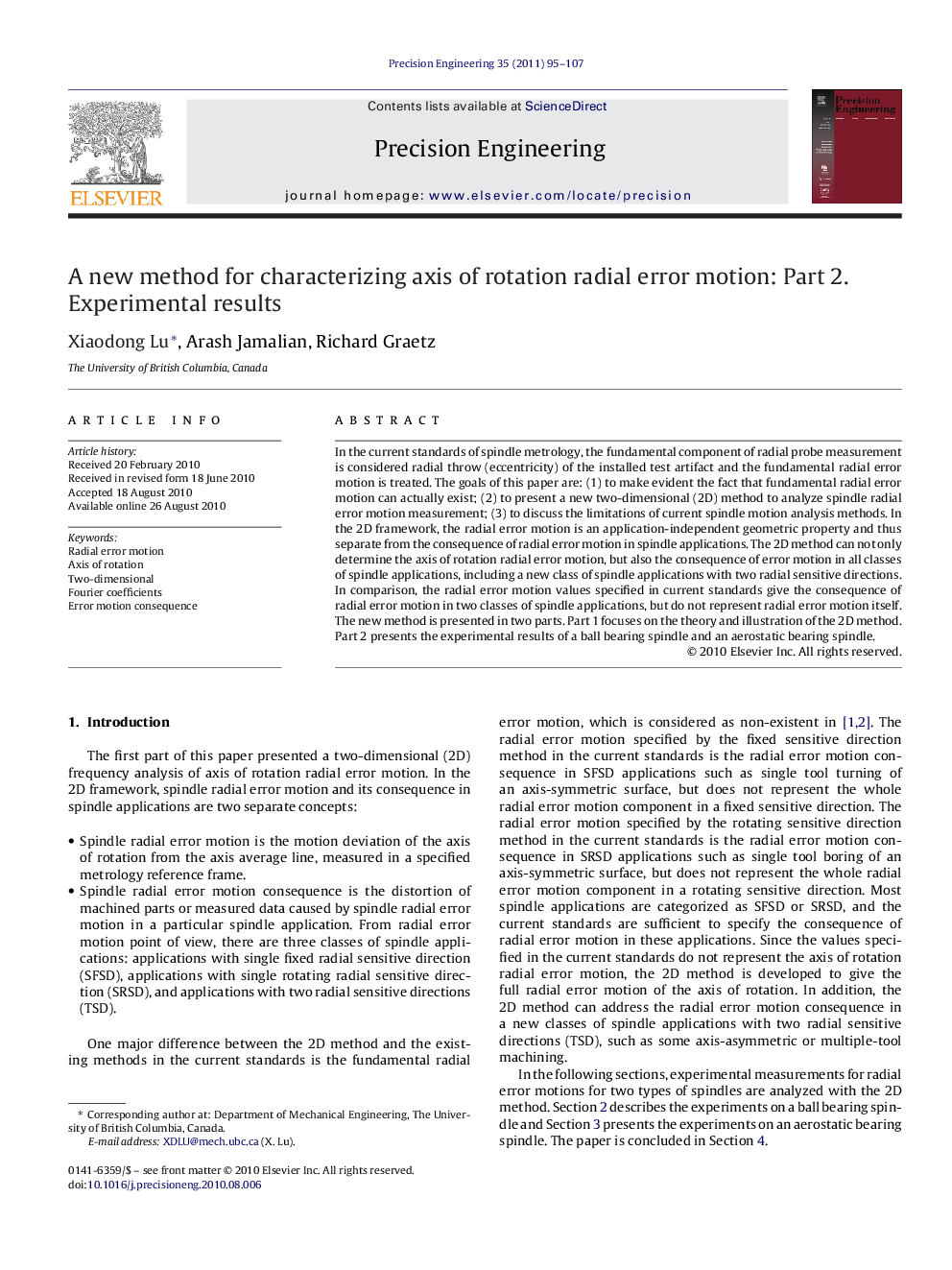| Article ID | Journal | Published Year | Pages | File Type |
|---|---|---|---|---|
| 804640 | Precision Engineering | 2011 | 13 Pages |
In the current standards of spindle metrology, the fundamental component of radial probe measurement is considered radial throw (eccentricity) of the installed test artifact and the fundamental radial error motion is treated. The goals of this paper are: (1) to make evident the fact that fundamental radial error motion can actually exist; (2) to present a new two-dimensional (2D) method to analyze spindle radial error motion measurement; (3) to discuss the limitations of current spindle motion analysis methods. In the 2D framework, the radial error motion is an application-independent geometric property and thus separate from the consequence of radial error motion in spindle applications. The 2D method can not only determine the axis of rotation radial error motion, but also the consequence of error motion in all classes of spindle applications, including a new class of spindle applications with two radial sensitive directions. In comparison, the radial error motion values specified in current standards give the consequence of radial error motion in two classes of spindle applications, but do not represent radial error motion itself. The new method is presented in two parts. Part 1 focuses on the theory and illustration of the 2D method. Part 2 presents the experimental results of a ball bearing spindle and an aerostatic bearing spindle.
